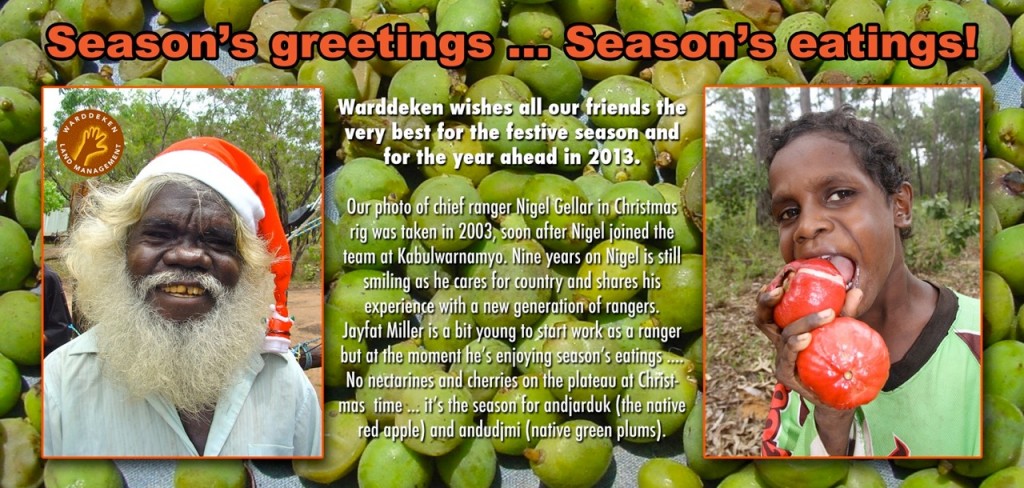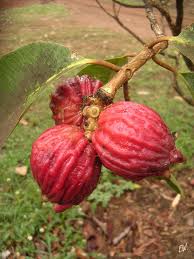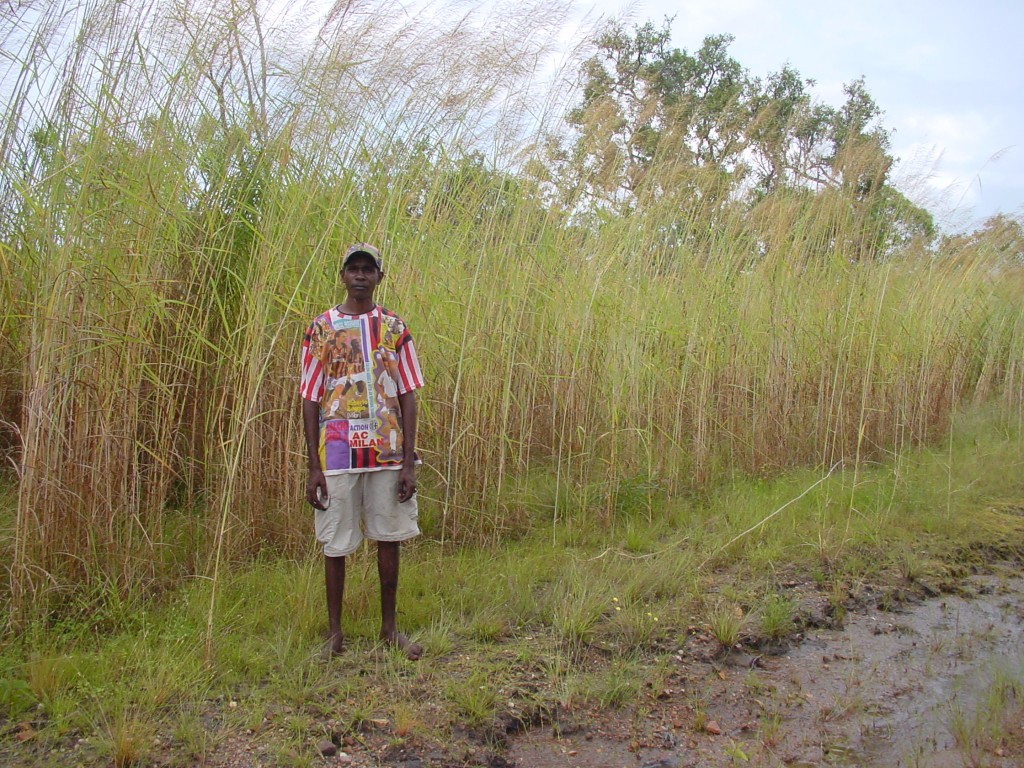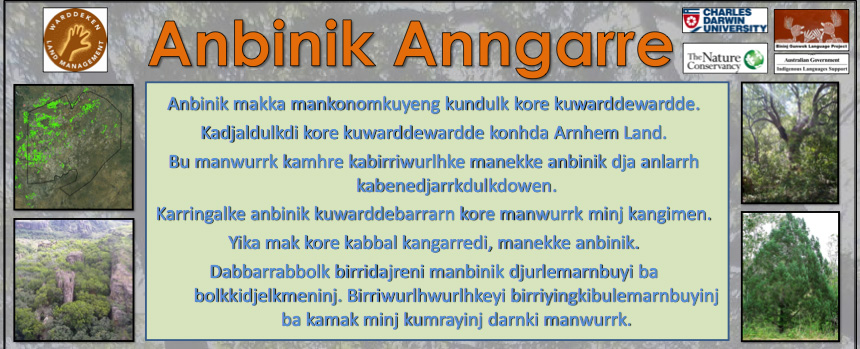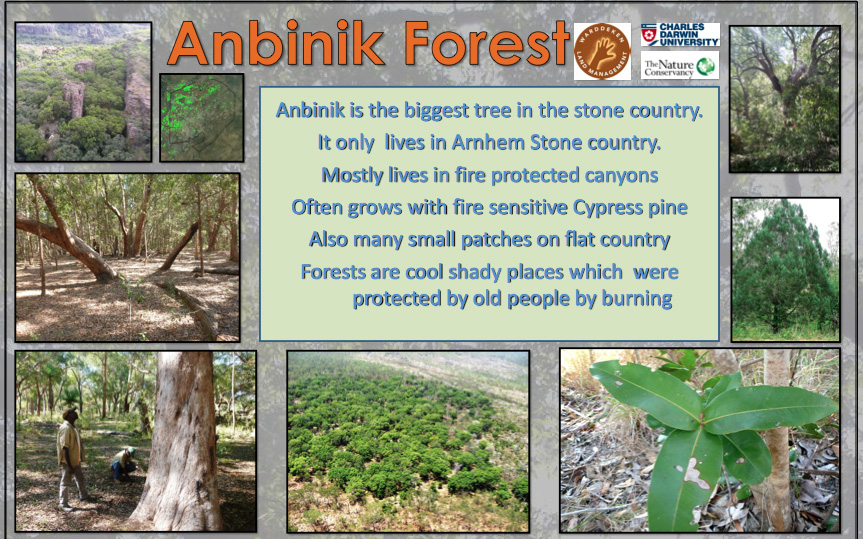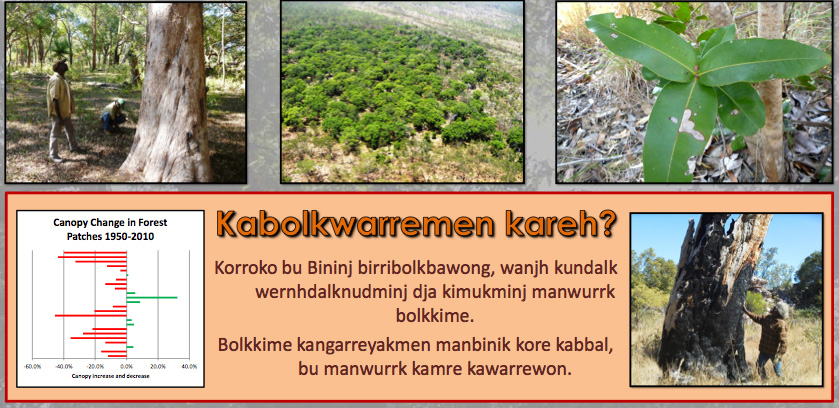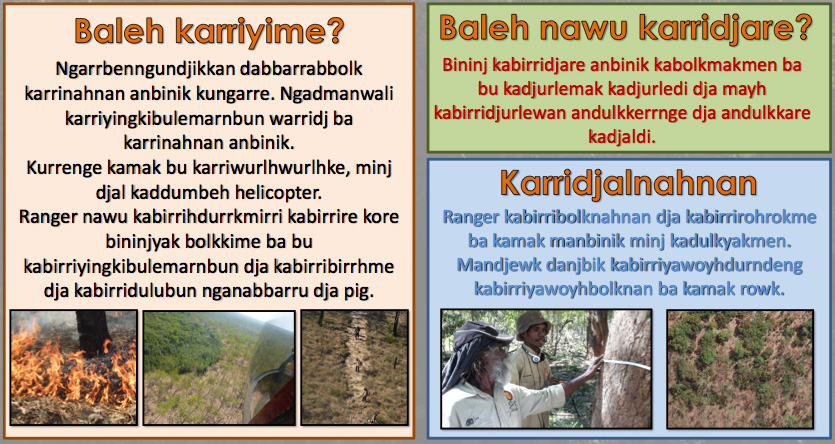It's Kunumeleng season (first rains, spelt Gunumeleng in Gundjeihmi). It's also the summer holiday season.. Here is a festive season greeting card from our friends at Warddeken Land Management Ltd.
The card features two bush foods which are abundant in kunumeleng.
Man-dudjmi (Kunwinjku), An-dudjmi (Gundjeihmi and Kundedjnjenghmi dialects), man-moyi (Kune dialect). Scientific name Buchanania obovata. A short variety of the tree is known as an-wodberr. The photo below is an example of an-wodberr, a favourite food for both bininj dja ngurrurdu (people and emus, or in Gundjeihmi bininj dja alwanjdjuk).
As for the bush red apple, man-djarduk (or an-djarduk in Gundjeihmi and Kundedjnjenghmi), you can hear a song about this fruit here. The scientific name is Syzygium suborbiculare.
Bonj, that is all.
